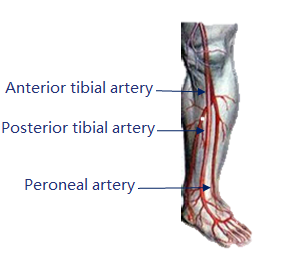

1) Using iron-based materials with good biocompatibility to improve the radial support strength while significantly reducing the thickness of the scaffold rod;2) Asymmetric coating technology simultaneously solves corrosion and drug release3) The surface composite coating realizes the controlled degradation of the iron-based scaffold: the new composite coating design is used to slow down the early iron corrosion to ensure the effective support of the scaffold in the early stage and accelerate the iron corrosion rate in the later period.After the scaffold is implanted, it eliminates the retraction of the blood vessels and gradually releases the medicine, which makes the blood vessels unobstructed and effectively relieves the patients' symptoms. The scaffold loses most of its mechanical support and adapts to tissue regeneration within 3-6 months, and is gradually absorbed by the body to restore exercise capacity. The length of the scaffold reaches 118mm, adapting to the real needs of patients.
1) Using iron-based materials with good biocompatibility to improve the radial support strength while significantly reducing the thickness of the scaffold;2) Asymmetric coating technology simultaneously solves corrosion and drug release3) The surface composite coating realizes the controllable degradation of the iron-based scaffold: the new composite coating design is used to slow down the early iron corrosion to ensure the effective support of the scaffold in the early stage and accelerate the iron corrosion rate in the later stage.4)After placing the IBS scaffold in the coronary artery, the drug on the surface of the scaffold was gradually released to inhibit endothelial hyperplasia. At the same time, the polylactic acid coating creates a slightly acidic environment after degradation, which accelerates the corrosion of iron and solves the problem of slow corrosion and absorption rate of iron. Over time, the IBS scaffold is completely degraded, and the trace elements released by the degradation products are absorbed from the body without leaving a permanent implant.Patients usually relieve symptoms immediately after PCI, and the coronary arteries take 3 to 6 months to recover. Once the coronary arteries heal, the support of the scaffold is no longer required. The iron-based absorbable scaffold is designed to disappear (or "absorb") from the body over time. This absorption helps restore the coronary artery to natural movement and function.
A) the short-term and long-term risks associated with the permanent retention of the implant in the body are avoided, such as long-term inflammation, displacement and restenosis caused by the long-term stimulation of foreign bodies;B) long-term dual antibody is not required to reduce the financial burden of patients and the risk of bleeding disease;C) avoiding the risk of stimulation or even perforation of vessels caused by long-term fatigue fracture (29% of permanent stent fracture rate at autopsy);D) to avoid long-term inflammation, displacement and restenosis caused by long-term stimulation of foreign bodies;E) medical examination, the degradation of IBS scaffold does not affect imaging examination such as MRI and CT;F) the degradation of IBS scaffold will no longer bind the artery.
A) the safety and efficacy were inferior to that of the early stage of the permanent stent, and the incidence of thrombosis in the middle stage was higher than that of the permanent stent;Limited plasticity;Acute retraction;Poor overexpansion performance; higher strut thickness.B) few specifications: due to the limitation of the properties of the intrinsic materials of polylactic acid, on the premise of ensuring the mechanical properties, the stent is relatively thick with few specifications, which can only cover 8% or even lower patients with simple lesions in the permanent stent group.C) strict operational requirements: due to the limitation of the properties of polylactic acid intrinsic materials and the poor mechanical properties of scaffolds, polylactic acid scaffolds can only be applied to simple lesions, while for highly calcified blood vessels, it is necessary to remove calcified plaques in advance to put scaffolds;Adequate balloon predilation was performed on the diseased vessels before scaffold implantation, and the scaffold should be slowly expanded, otherwise the scaffold will break.D) polylactic acid stent double resistance for a long time, not only increase the cost, but also bring bleeding complications.E) high storage and transportation requirements
